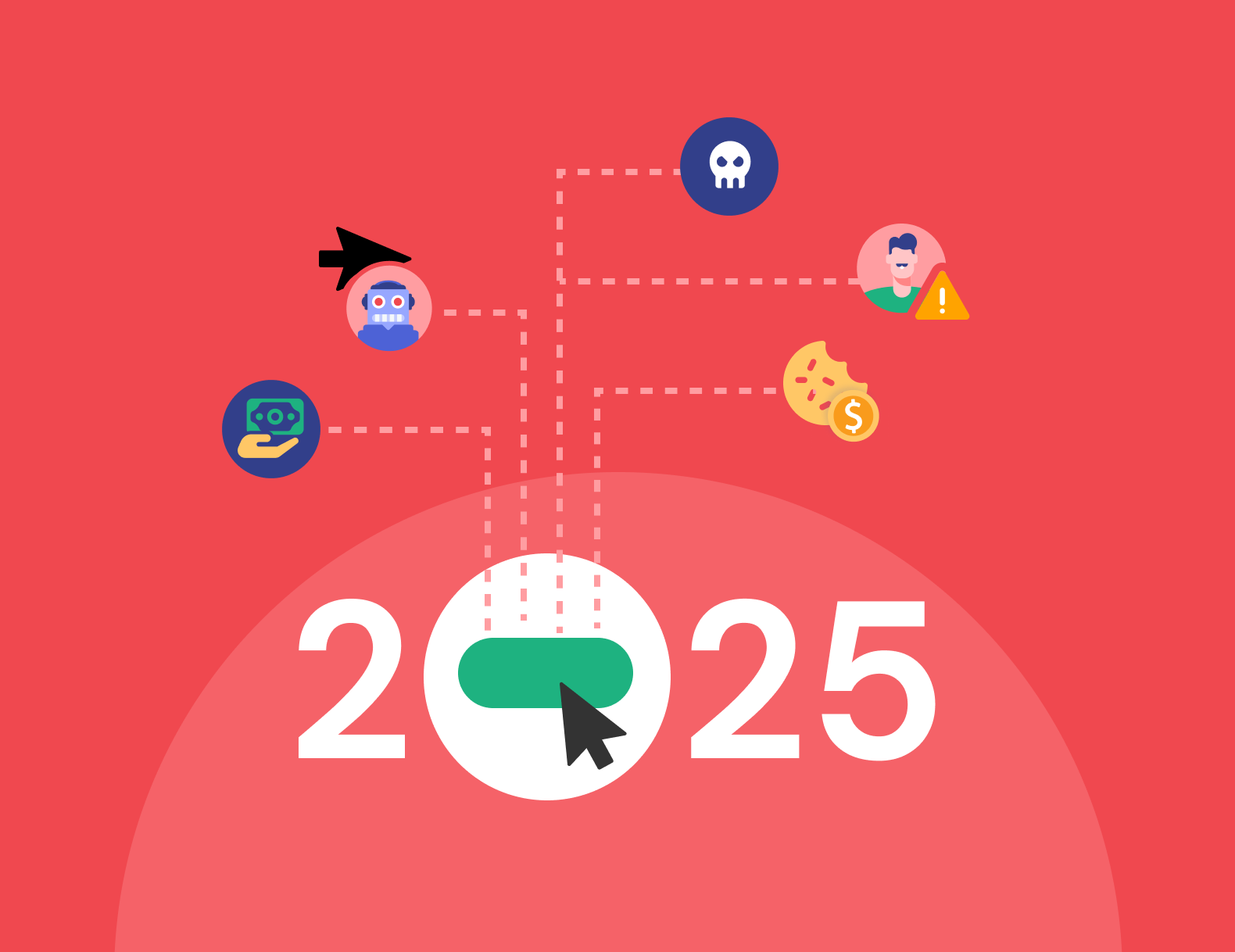The Hidden Cost of Click Fraud in eCommerce: What Retailers Need to Know

Click fraud is one of the biggest hidden drains on eCommerce marketing budgets. Studies show that over 14% of all PPC clicks are fraudulent. For retailers relying on paid traffic to drive sales, these fake interactions do more than waste ad spend; they distort campaign data, mislead optimisation, and quietly reduce return on ad spend (ROAS).
From bots and competitor price scrapers to low-intent repeat visitors, invalid traffic is eroding eCommerce performance behind the scenes. This blog unpacks how click fraud works, why eCommerce brands are prime targets, and how click fraud protection software can safeguard your PPC investment.
Understanding Click Fraud in eCommerce
What is click fraud?
Click fraud occurs when paid ads are clicked without genuine interest in making a purchase. These clicks can come from automated bots, unethical competitors, or fraudulent affiliates who aim to drain budgets or manipulate conversions.
How click fraud happens in eCommerce
Retail and eCommerce campaigns are particularly exposed to:
- Automated bots that mimic human browsing behaviour to appear legitimate.
- Competitor price scrapers that repeatedly click paid listings to monitor pricing or exhaust CPC budgets.
- Affiliate fraud where partners inflate clicks or conversions to claim unearned commissions.
These invalid clicks look authentic in analytics dashboards. They trigger remarketing pixels, inflate engagement metrics, and distort attribution models, all without driving any real sales.
Why Retail Campaigns Are Prime Targets
Retail advertisers face thin margins, constant competition, and always-on campaigns, all of which create fertile ground for click fraud.
Always-on campaigns create exposure
eCommerce brands run acquisition campaigns continuously across Google, Meta, and programmatic platforms. This constant activity provides a broad attack surface where bots and malicious actors can quietly drain budget in real time.
High-intent bidding models attract bots
Branded search terms and shopping campaigns use intent-driven bidding strategies. Fraudsters exploit these premium CPC keywords, diverting ad spend away from real shoppers and inflating acquisition costs.
Promotions and price scraping inflate CPCs
Discounts, seasonal promotions, and free-shipping offers attract both consumers and automated systems scraping prices. These bots click through paid listings to track competitors, artificially increasing click volume and CPCs.
Invalid traffic doesn’t just affect ad spend, it distorts forecasting, misguides bidding, and pollutes the data that fuels remarketing and inventory decisions.
The Financial Impact of Click Fraud on PPC Campaigns
Wasted ad spend on non-human traffic
Every fraudulent click drains your budget instantly. Click fraud is expected to cost advertisers over US$172 billion by 2028, with eCommerce accounting for a large share of that loss.
Inflated customer acquisition costs (CAC)
When bots absorb paid clicks without converting, your CAC rises. This inflates spend metrics and makes it harder to justify investment in performance marketing.
Distorted attribution and retargeting
Fake clicks trigger tracking pixels, leading to invalid users being retargeted across campaigns. This contaminates remarketing audiences, wastes impressions, and prevents you from reaching genuine high-value buyers.
How to Detect Abnormal Traffic and Fraudulent Activity
Detecting click fraud early is crucial for maintaining clean, reliable PPC data. Watch for these red flags:
- Sudden spikes in traffic without conversions – A surge in clicks with no matching uplift in sales often signals automated or fake activity.
- High bounce rates and short sessions – Bots or low-intent users land and leave within seconds, inflating engagement but adding no value.
- Duplicate clicks or repeated IPs – Multiple clicks from the same device or IP indicate suspicious repetition or affiliate abuse.
- Misleading tROAS performance – When tROAS campaigns over-target existing or loyal customers, it may appear efficient but limits new acquisition potential.
Using behavioural analysis and traffic quality monitoring tools helps identify these anomalies before they distort reporting.
How to Prevent Click Fraud and Safeguard eCommerce Budgets
Use real-time click fraud protection software
Reactive reporting isn’t enough. You need a real-time fraud prevention solution that analyses every interaction before it affects spend. Solutions like TrafficGuard’s Click Fraud eCommerce Protection Software automatically detect and block bots, click farms, and price scrapers before they corrupt campaign data.
Monitor and analyse traffic quality
Combine click fraud protection tools with analytics platforms such as GA4 and Meta Business Manager. Filtering invalid traffic upstream ensures your attribution data remains clean and actionable.
Block repeat offenders with frequency caps
Apply platform-level frequency caps to limit repeated interactions from the same IP or user. This minimises wasted impressions and prevents over-serving ads to returning or fraudulent visitors.
Integrate fraud detection with attribution and bidding
Feed verified click data into your attribution models and bidding strategies. Clean data ensures optimisation algorithms allocate budget towards incremental conversions, not recycled clicks or fake engagement.
Choosing the Best Click Fraud Protection Tools for eCommerce
What to look for in click fraud prevention software
The best click fraud software for eCommerce should offer:
- Real-time detection and blocking before invalid clicks reach your analytics.
- Cross-channel protection across Google, Meta, programmatic, and affiliate sources.
- User-level transparency for full visibility into every interaction.
Scalable infrastructure to support multiple accounts or high-volume campaigns.
Why AI-driven fraud detection delivers better accuracy
AI models continuously learn from behavioural patterns across millions of clicks. This allows for adaptive protection that evolves with new fraud tactics and prevents emerging threats before they escalate.
How TrafficGuard protects eCommerce brands
TrafficGuard helps online retailers protect against click fraud by analysing every interaction in real time. Our technology verifies engagement across Google Ads, Performance Max, and Meta campaigns, blocking invalid clicks before they waste spend.
For eCommerce marketers, this means:
- Lower CAC and higher ROAS through cleaner traffic.Smarter budget allocation across SKUs and campaigns.
- Reliable attribution and audience insights for scaling performance.
Discover how TrafficGuard for Performance Max helps eCommerce brands eliminate wasteful traffic and improve campaign efficiency.
What Is the Cost of Click Fraud for Online Retailers?
The cost of click fraud extends beyond wasted ad spend. It impacts:
- Revenue growth – Budgets diverted to fake clicks reduce funds available for real customer acquisition.
- Data accuracy – Polluted metrics lead to poor optimisation and misguided strategy.
- Operational efficiency – Distorted insights affect inventory management, pricing, and remarketing.
Even a 10% invalid traffic rate can wipe out thousands in wasted spend each month. Without prevention, these costs compound rapidly across seasons and campaigns.
Winni slashed bot traffic by 62.5% and doubled ROI in a month. See how TrafficGuard turned wasted clicks into real revenue. Read the story here.
Conclusion
Click fraud is not a minor leak; it’s a systemic drain on eCommerce performance. Clean data and real-time prevention are no longer optional; they’re essential for accurate optimisation and sustainable growth.
With TrafficGuard’s click fraud protection, every click is verified, every budget line is safeguarded, and every decision is driven by genuine user intent.
Because in eCommerce, profitability starts with trust in your data.
FAQs & Key Takeaways
1. What is click fraud protection software?
Click fraud protection software detects and blocks invalid clicks in real time, preventing bots, scrapers, and repeat users from wasting PPC budgets.
2. How does click fraud affect PPC campaigns?
It inflates metrics, increases CPC and CAC, and leads to wasted ad spend. Fraudulent activity also corrupts attribution data and misguides optimisation.
3. How can I detect suspicious click activity?
Monitor for traffic spikes, abnormal conversion ratios, high bounce rates, and repeated IPs. These are common indicators of non-genuine engagement.
4. What are the best eCommerce fraud protection tools?
Look for AI-driven platforms that provide cross-channel protection and real-time blocking. Tools like TrafficGuard offer independent verification beyond what ad platforms detect.
5. Can Google Ads detect click fraud automatically?
Google filters some invalid traffic but often misses sophisticated bot and behavioural fraud. Independent tools offer deeper visibility and stronger protection.
6. How much does click fraud cost eCommerce advertisers?
Depending on industry and campaign volume, eCommerce brands can lose 10–20% of their paid traffic to invalid clicks each month which is equivalent to thousands in wasted spend.
7. How can I safeguard my eCommerce budget from invalid traffic?
Use a combination of real-time prevention software, frequency caps, and behavioural monitoring to maintain clean traffic and optimise for genuine conversions.
8. Why choose TrafficGuard over other click fraud tools?
TrafficGuard offers transparent reporting, machine-learning verification, and proactive blocking across multiple channels, helping retailers achieve cleaner data, higher ROAS, and scalable protection.
Get started - it's free
You can set up a TrafficGuard account in minutes, so we’ll be protecting your campaigns before you can say ‘sky-high ROI’.
Subscribe
Subscribe now to get all the latest news and insights on digital advertising, machine learning and ad fraud.








